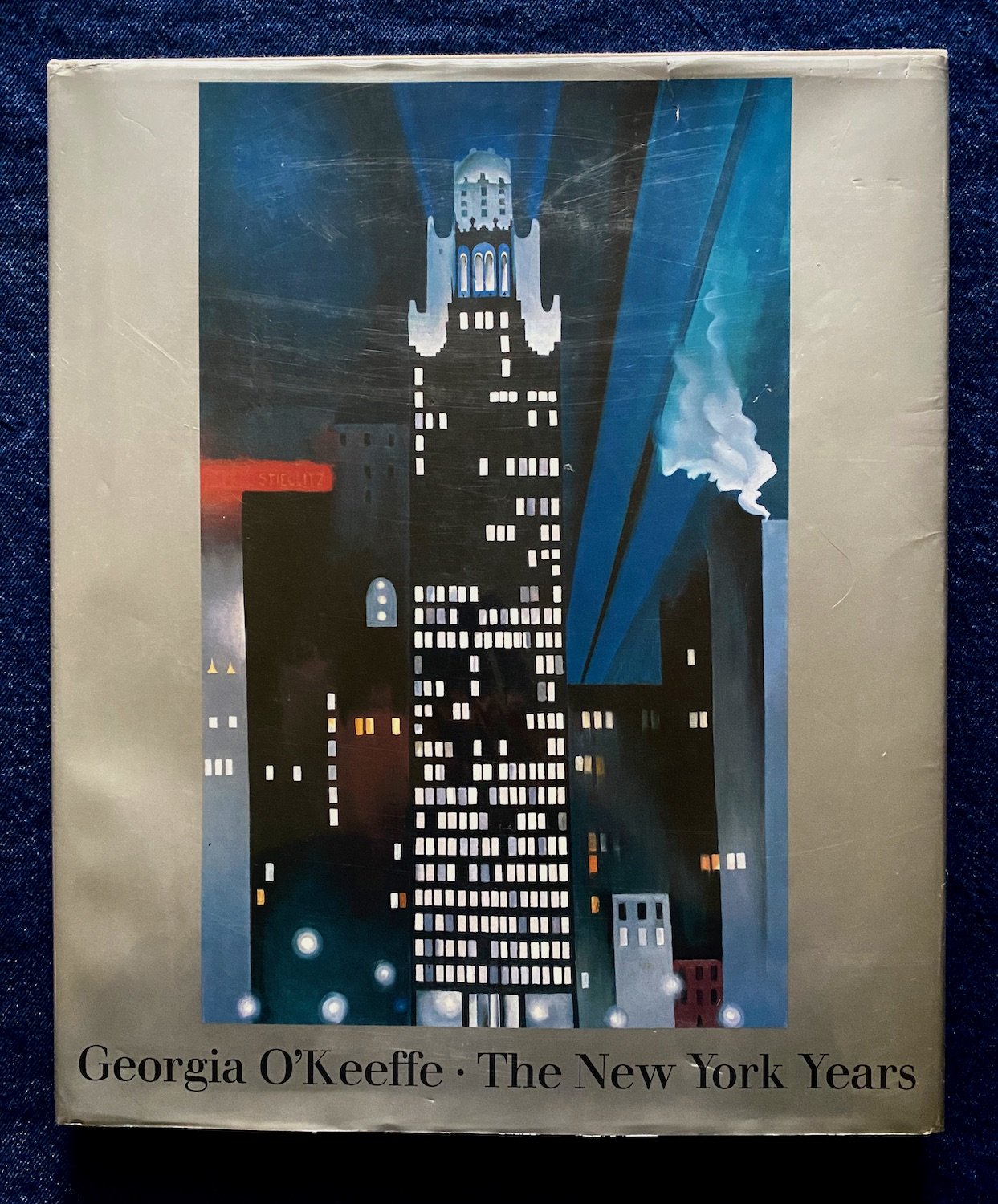 Image 1 of 7
Image 1 of 7

 Image 2 of 7
Image 2 of 7

 Image 3 of 7
Image 3 of 7

 Image 4 of 7
Image 4 of 7

 Image 5 of 7
Image 5 of 7

 Image 6 of 7
Image 6 of 7

 Image 7 of 7
Image 7 of 7








Georgia O'Keeffe: The New York Years
Georgia O'Keeffe. Edited by Doris Bry and Nicholas Callaway. Critical essay by Bram Dijkstra.
O'Keeffe's New York City is a living organism, a breathing giant. The artist's radiant skyscrapers, streetlamp-lit nocturnes and river views celebrate a city capable of transcending crime and grime. Her Gotham period (1916-1932) began with Kandinsky-like abstractions and moved on to quasi-erotic images, cosmic eggs, semi-abstract natural forms, and barns and birches of upstate Lake George. With 91 color plates, this magnificent, oversize album completes a three-volume series begun with One Hundred Flowers and In the West. In his thoughtful essay, Dijkstra (Idols of Perversity) argues that O'Keeffe was no mystic but a humanistic realist who expressed the beauty of sensory experience. He also charts her break with husband-photographer Alfred Stieglitz's idealized concept of the feminine. Bry is the author of two monographs on Stieglitz; Callaway, director of Callaway Editions, is a specialist on O'Keeffe and Stieglitz. (Publishers Weekly)
Alfred A. Knopf, 1991. Hardcover, Elephant Folio (16 in. tall). 130 pages. Near Fine used condition, in mylar jacket.
Georgia O'Keeffe. Edited by Doris Bry and Nicholas Callaway. Critical essay by Bram Dijkstra.
O'Keeffe's New York City is a living organism, a breathing giant. The artist's radiant skyscrapers, streetlamp-lit nocturnes and river views celebrate a city capable of transcending crime and grime. Her Gotham period (1916-1932) began with Kandinsky-like abstractions and moved on to quasi-erotic images, cosmic eggs, semi-abstract natural forms, and barns and birches of upstate Lake George. With 91 color plates, this magnificent, oversize album completes a three-volume series begun with One Hundred Flowers and In the West. In his thoughtful essay, Dijkstra (Idols of Perversity) argues that O'Keeffe was no mystic but a humanistic realist who expressed the beauty of sensory experience. He also charts her break with husband-photographer Alfred Stieglitz's idealized concept of the feminine. Bry is the author of two monographs on Stieglitz; Callaway, director of Callaway Editions, is a specialist on O'Keeffe and Stieglitz. (Publishers Weekly)
Alfred A. Knopf, 1991. Hardcover, Elephant Folio (16 in. tall). 130 pages. Near Fine used condition, in mylar jacket.